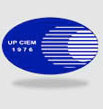A new Capiz is rising
How a family changes Northern Panay
People are coming back to Capiz, a province in the northern part of Panay Island that is transforming from a folklore-rich land that used to celebrate Aswang Festival into the site of a world-class commercial business district.
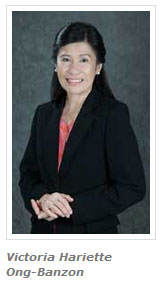 A religious family of mostly engineers is leading the transformation, using not government funds, but their own money, to build Pueblo de Panay, a 400-hectare development out of the hills and unproductive lands of Roxas City. It started as a vision, says Victoria Hariette Ong-Banzon, one of the seven Ong siblings who run property developer Sacred Heart of Jesus Prime Holdings Inc.
A religious family of mostly engineers is leading the transformation, using not government funds, but their own money, to build Pueblo de Panay, a 400-hectare development out of the hills and unproductive lands of Roxas City. It started as a vision, says Victoria Hariette Ong-Banzon, one of the seven Ong siblings who run property developer Sacred Heart of Jesus Prime Holdings Inc.
“We envision Pueblo de Panay as a center for economic and social progress. We want to employ Filipinos in our own land and not wait for the time that they will have to go out and be employed by foreigners,” Victoria, a soft-spoken former professor at the University of the Philippines, says.
SHJPHI, probably the largest employer in Roxas City next to the government, has more than 400 individuals on its payroll. Among them is Warner Alicante, a former banker in a multinational bank based in Makati City, who was inspired to return to Capiz and helped raise funds for Pueblo de Panay.
Alicante, who serves as comptroller of SHJPHI’s subsidiary Pueblo de Panay Inc., says the parent company has so far invested P1.2 billion to start the groundwork for the first phase of the project that already attracted major locators such as a Robinson’s mall. “We are inviting more investors to join us,” he says.
Company driver Pablo Bendoy says the project has created job opportunities for Capiz residents like him. “I used to work for a marble company in Cebu, and before that in Batangas. Now, I work in my home province Capiz,” he says.
The transformation is also attracting tourists to Capiz. Randy Glimer, a tour guide at the 17th Century Sta. Monica Church in Panay town, says more people have been given work even outside Pueblo de Panay. Sta. Monica Church is known for a 10-ton bell, said to be the largest in Asia.
Fellow tour guide Pepe Borres agrees, saying college graduates in Capiz could not find work in their home province before Pueblo de Panay was established. Now, a plan to establish a call center inside the technopark component of Pueblo de Panay creates excitement among college students in the province.
Aswang tale
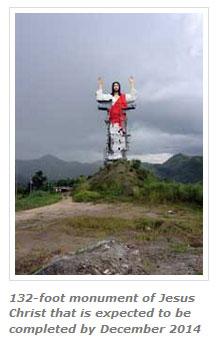 Borres, who also returned to Capiz after working in Manila for several years, says the undeserved reputation of the province as the land of the aswangs held back development for decades. “People in Metro Manila would not buy fish in the market if they are told the fish came from Capiz. So, Capiz fishpond operators had to ship their products to Iloilo City first, before bringing them to Metro Manila, to make it appear they came from Iloilo,” he says.
Borres, who also returned to Capiz after working in Manila for several years, says the undeserved reputation of the province as the land of the aswangs held back development for decades. “People in Metro Manila would not buy fish in the market if they are told the fish came from Capiz. So, Capiz fishpond operators had to ship their products to Iloilo City first, before bringing them to Metro Manila, to make it appear they came from Iloilo,” he says.
For decades, Capiz has tried to shed its reputation as the land of aswang, or mythical flesh-eating night creatures, until a tourism-oriented group decided to take advantage of it and hold Aswang Festival in 2004. The festival was eventually shelved after the Church opposed the holding of such festivity.
Victoria, a history buff who serves as the vice president for administration of SHJPHI, also dismissed the tale about the aswang, saying it had something to do with Panay’s beautiful, pre-Spanish history and the uprising of its warriors during the colonial period.
“It has something to do with Panay warriors. Since the Spanish times up until the American times, our Pintado warriors, who later became revolutionaries or freedom fighters, were never rally defeated, because they would attack at night when the moon was full,” she says.
“In the early 1900s, a newspaper published that two aswang were seen in Capiz. It turned out that two men, who were revolutionaries or freedom fighters were captured. They opened them up, left their organs and threw them into the Panay river. Filipinos, who by nature were superstitious, believed the story,” she says.
Pueblo de Panay
Roxas City, the seafood capital of the Philippines which also bore the wrath of typhoon Yolanda in November last year, is the site of Pueblo de Panay, which grew out of the Ong family’s vision to develop the countryside and help their fellow Capiznons in God’s honor.
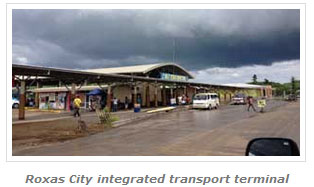 The capital and a component city of Capiz, Roxas has a population of less than 200,000 people. It has an airport with twice daily flights to and from Manila, one traffic light and five taxi cabs. Land transportation is dominated by tricycles, but many of its residents are high income-earners, something evident in their large colonial houses, 37 banks and a branch of the Bangko Sentral ng Pilipinas.
The capital and a component city of Capiz, Roxas has a population of less than 200,000 people. It has an airport with twice daily flights to and from Manila, one traffic light and five taxi cabs. Land transportation is dominated by tricycles, but many of its residents are high income-earners, something evident in their large colonial houses, 37 banks and a branch of the Bangko Sentral ng Pilipinas.
The development of Pueblo de Panay since 2012 and the decision of Robinson’s Group to build a mall in the mixed-used township began to excite not only Capiznons but the whole of Panay Island, which also includes the provinces of Aklan, Antique and Iloilo. The whole of Panay has more than 4 million residents.
Glenn Beup, a former municipal administrator and environment officer of Barbara town in Iloilo, says he supports Pueblo de Panay because it committed to allot 50 percent of the lot area for the environment. Beup, now an environmental consultant of the company, led projects such as the protection of flora and fauna in the area and the establishment of a waste segregation facility. Pueblo de Panay boasts of rich flora and fauna, and only 50 percent of the 400-hectare township will be developed to preserve the property’s pristine beauty, Beup says.
“It is a place where one can live, play, work and everything is balanced. After a hard day’s work, you could jog in open areas,” says Victoria. “There were questions about us developing fishpond areas. But when we bought it, it was already unproductive. So I don’t know how environmentalists would react, whether they wanted to preserve an unproductive area or allow us to develop it and introduce environmentally safe methods of construction so that we could maximize the potential of the place.”
“Some say we are transforming the face of Roxas City. In addition to that, we want to be remembered as a company that also provides good quality of life to Panaynons,” she says.
Masterplanned township
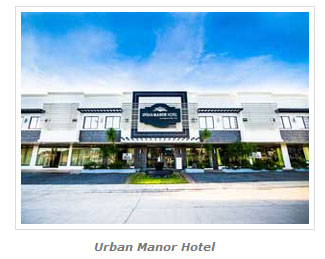 It is considered the first masterplanned township in Capiz. The completion of Robinson’s mall in Pueblo de Panay early this year has triggered the influx of visitors who were amazed by well-lit multiple-lane roads, with jogging trail in a rural province. It also caught the attention of other major companies such as the SM Group, which now reportedly plans to build a mall near the airport.
It is considered the first masterplanned township in Capiz. The completion of Robinson’s mall in Pueblo de Panay early this year has triggered the influx of visitors who were amazed by well-lit multiple-lane roads, with jogging trail in a rural province. It also caught the attention of other major companies such as the SM Group, which now reportedly plans to build a mall near the airport.
SHJPHI, whose vision is to be a major player in the Philippines’ economic and social advancement, built two hotels and a convention center to kickstart eco-tourism in Pueblo de Panay. It also donated a two-hectare lot where a well-organized transport terminal was put up. A marketplace, a government center, a police station, a waste segregation facility were also established in the area.
“We started accumulating land in 1990. That was 24 years ago. We started with 50 hectares and was initially called Victoria Park. It was supposed to be a small community, but it grew, so we had to call it a pueblo,” Victoria says. “We chose the term Pueblo de Panay, because we wanted to create a township that is complete in terms of amenities and features. What we can see in a city should be found in Pueblo de Panay.”
It was renamed after the historic town of Pan-ay also in Capiz. It covers parts of barangays Lawaan, Sibaguan and Dinginan in Roxas City. Victoria says the project has efficient multi-lane road network with bridges and sidewalks, tree-lined highway connecting two of only three major highways in Roxas City, pedestrian and bicycle-friendly lanes and residential villages, shops, gardens, worship places, a transport terminal, a marketplace, among others.
The company also invites more investors such as schools, business process outsourcing companies and commercial establishments. UP Visayas recently started offering a Master of Management program.
Pueblo de Panay Technopark, a seven-hectare information, communications and technology special economic zone that targets BPO companies, has secured pre-qualification approval from the Philippine Economic Zone Authority. The technopark is equipped with fiber-optic and wireless connectivity.
Victoria is particularly excited about the prospect of a business process outsourcing company establishing a call center in Pueblo de Panay. “We thought of the BPO industries because we believe that there are talents available in Capiz. Maybe most of them go to Metro Manila or cities like Cebu, Iloilo or Bacolod to work, but we have surveyed that some are interested to work here,” she says.
Seafood capital
The project is providing residents of Roxas City and towns in northern Panay new job opportunities outside aquaculture. Victoria says aquaculture, particularly bangus and prawn farming, was their original family business in the 1960s up to the 1980s. Their grandparents are government contractors who built roads and school buildings in Iloilo and Antique that lasted for many years, but their father chose to go into the fish pond business in Roxas City.
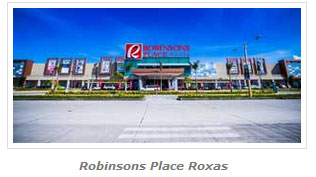 “My father inherited a fish pond area from my grandfather on the Chinese side. That lot area was the one that gave us the livelihood from 1960s to 1980s,” she says. “Before we went to real estate development, we were actually fish pond operators.”
“My father inherited a fish pond area from my grandfather on the Chinese side. That lot area was the one that gave us the livelihood from 1960s to 1980s,” she says. “Before we went to real estate development, we were actually fish pond operators.”
Victoria and an older brother were born in Iloilo City, but the rest of the Ong siblings were born in Roxas City. Victoria’s other siblings are Jose Nery Ong, a UP Mathematics and AIM graduate who became the company’s chairman of the board; Hyacinth Ong Viterbo, who runs the hotel business; Vicente Ong III, Nery Joachim Ong, Hannibal Zenon Ong and Mary Daphnie Ong.
“We combine the religiosity of the Dioso side, with priests and nuns, and the business acumen of the Ong side,” Veronica says.
“As most of us were graduating from college with Engineering degrees, it was timely that we explored land development. My dad, being a civil engineer, first practiced his profession on fish pond development. Then, the family with its exposure to equipment and leasing, embarked on our first land development, with Twin Hearts Village,” Victoria says.
When a virus ravaged the seafood industry in Roxas City in the 1990s, the Ong siblings decided to diversify to real estate. SHJPHI chose to undertake real estate projects and other developments through subsidiaries Sacred Heart of Jesus Development Corp., Blue Chip Builders Inc., Capiz Development Foundation Inc. and recently Pueblo de Panay Inc.
The parent corporation has built more than a dozen subdivisions in Roxas City and one in Kalibo, Aklan. Its projects include Twin Hearts Village, St. Francis Park, Mission Hills, Villa de San Lorenzo Ruiz, Happy Homes, Vista del Rio, Rio Grande, Costa Verde, Verdant Meadows, Centro Villas and Villa Peraz as well as community mortgage program projects with the National Housing Authority and Gawad Kalinga projects with the Couples for Christ.
SHJPHI has sold more than 7,000 houses and lots, and developed at least 150 hectares of residential subdivisions and other projects in northern Panay. It has also donated home-lots to several hundreds of socialized housing family beneficiaries in Roxas City and its adjoining towns.
Victoria, a professional industrial engineer and a former faculty member of the UP Engineering College, introduced strategic management system, organizational development and total quality management in their family corporation. The Ong siblings took the management positions in the company after their parents died in 2004 and 2005.
The Ong siblings sold the fish ponds. Of the seven children, four became engineers. “As engineers, we are exposed to land development, so real estate was a natural thing to go into for us.”
A vision for Capiz
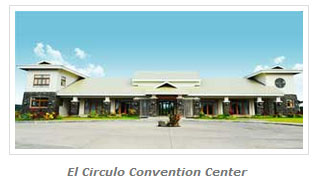 Pueblo de Panay started as a vision, says Victoria. “In 1990, my sister Hyacinth had a rare disease of the kidney, only the second such case in the Philippines, with the first one dying already. All the doctors at the National Kidney Institute could say was that it was a creeping allergy, starting with one organ, before it creeps to another. In her case, the right kidney was affected. Maybe it was viral, maybe it was bacterial, but the thing is it was killing her,” she says.
Pueblo de Panay started as a vision, says Victoria. “In 1990, my sister Hyacinth had a rare disease of the kidney, only the second such case in the Philippines, with the first one dying already. All the doctors at the National Kidney Institute could say was that it was a creeping allergy, starting with one organ, before it creeps to another. In her case, the right kidney was affected. Maybe it was viral, maybe it was bacterial, but the thing is it was killing her,” she says.
Victoria says the doctors advised the family to seek treatment in the US. “The miracle happened when we began to lean on the family, knowing that God is the greatest healer and we prayed for what we could give up for her healing. My daddy was into cockfighting. He was like a known cockfighter in Capiz,” she says. “My sister was given an illness that money could not cure, even if we would bring her to the US. My parents felt they had to surrender everything to the Lord and my mother made a pact that whatever the family could save from the US trip, we would give to the Church.”
Her sister’s other kidney was spared and healed. After that, the family built the largest statue of Mother Mary and later a 132-foot statue of Jesus Christ in Capiz, said to be the tallest in Asia. “These are private experiences of the family that little by little, built on our experience. This is the reason why we are so grateful to God,” says Victoria.
“It was never planned, it just happened. That’s why we say it is a gift from God. If you look at the name of our companies… they are SHJ, Sacred Heart of Jesus Group of Companies,” she says.
Hyacinth went on to study Marketing at UP-Visayas and helped establish the Holy Trinity Divine Healing Ministry, a church-affiliated apostolate group on healing and outreach with 2,000 lay volunteer prayer healers. Hyacinth is also now the vice president for finance of Pueblo de Panay Inc.
“Those experiences changed the businessman in us. Our lineage could actually be traced not only to the Filipino-Chinese business families of the Ongs, but also to the religious and educator families of the Dioso. We are not completely 100-percent Chinese. We are Spanish, Filipino, and also Aeta by blood,” she says.
Gift from God
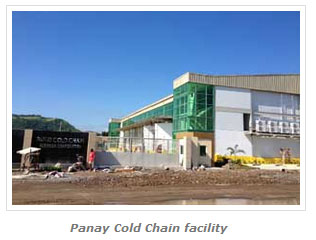 “We believe that all of these are God’s gift to us. We are in the business because of the mission. That is why up to now, we still support the healing ministry, where my sister Hyacinth shares her experience of healing. At the same time, we manage the business, because it supports the apostolate of the company,” she says.
“We believe that all of these are God’s gift to us. We are in the business because of the mission. That is why up to now, we still support the healing ministry, where my sister Hyacinth shares her experience of healing. At the same time, we manage the business, because it supports the apostolate of the company,” she says.
Victoria calls Roxas City as the Venice of the Philippines, because of its waterways. “Since we had to develop near the city, we have to transform the face of Roxas City by developing environmentally friendly projects in the way that they are of good quality. In terms of quality, we don’t compromise. That’s why little by little, our track record of being affordable and excellent developers was established.”
“We started with the middle market for Twin Hearts Village. There were many developers ahead of us, but they are not known for the quality that we offer,” she says. “Being former fish pond developers, and my dad being a civil engineer, we developed a technique. We excavate the mud and would not fill, until the mud is removed. We do that extra work, so that the quality will not be sacrificed.”
That commitment to quality work is driving the development of Pueblo de Panay, also partially inspired by what the family saw during their travels abroad, particularly in Singapore. “You also have to let the world know that you have a very good vision in countryside development. If only we could bring what we saw abroad, like Singapore, the garden city, where everything is so organized,” says Victoria.
The Filipino can
“In Pueblo de Panay, we are trying to prove that the Filipino can. We show through our developments that we deserve wider roads, even before the heavy traffic comes in,” she says. “In Pueblo de Panay, we introduced a three-lane road in and three lane-road out. That is equivalent to a six-lane road, with bike lanes, jogging lanes and pedestrian lane. We also planted native trees on the center islands. Experts say if you plant native trees, the flora and the fauna will follow naturally. So we started planting kamagong trees on the center islands,” she says.
Victoria says Pablo de Panay is a long-term investment that can be built upon by the next generation. “We are thinking of writing our family constitution, as we will be opening to non-family members,” says Victoria. “How we wish we have partners in each area, so the project development would fast track. Right now, we are only seven siblings with 400 employees.”
“So we see the interconnection, and we want to leave the legacy to the next generation. We do this for the long term. We are thinking of writing our family constitution and professionalizing. From a family business, we are now open to more professionals coming in, with the same values that we espouse,” she says.
She says Pueblo de Panay is mainly funded by the family corporation’s equities and bank loans. “That’s why we are inviting investors, locators to share in this wonderful vision to really develop the countryside into something that would address a need like a township. Everything is already there, you have the schools, the market, the shops, the eateries. We want partners who believe in the countryside and at the same time who want to become profitable and sustainable in their business choices,” she says.
Victoria believes that countryside development is the key to economic progress of the country. “We love the Philippines. Who else will help us, but us?” RTD
Source: http://manilastandardtoday.com/2014/09/13/a-new-capiz-is-rising
Share this page:





